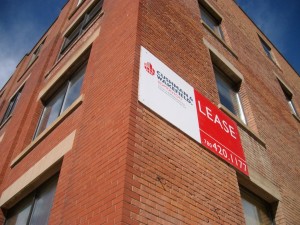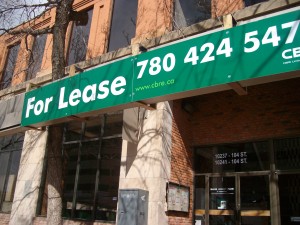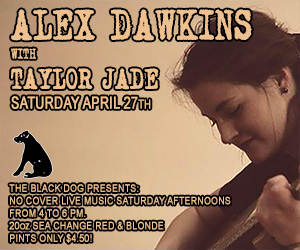LIVE TO WORK, WORK TO LIVE: Zoning proposals good news for city artists
 In the movies, artists live in studios in giant empty warehouses because the rent is low and there’s plenty of work space. They sleep next to their sculptures and paintings, and other artists ride the freight elevator up to attend their cool parties.
In the movies, artists live in studios in giant empty warehouses because the rent is low and there’s plenty of work space. They sleep next to their sculptures and paintings, and other artists ride the freight elevator up to attend their cool parties.
Here in Edmonton, that would be illegal.
There’s a movement at work to change that. The city has just released its opinion on proposals to allow more artists to live – legally – in their studios, but unlike other cities where artists can live and work in cheap warehouses in industrial zones, the plan here is only going as so far as expanding the practice to commercially-zoned property.
“Live-work is a brand-new use in Edmonton. It’s used other places. I think we have to look at this one carefully to get this right,” says Katherine Kerr, project coordinator with Arts Habitat Edmonton, which held consultations last year about changing Edmonton’s bylaws.
In 2008, the Edmonton Arts Council made recommendations in a document called “The Art of Living” that called on the city to review and redraft bylaws that inhibit the arts. This month, the city released its proposed changes. In addition to allowing artists to live and work in studios in commercial property, the plan allows galleries and libraries in commercial zones, as well as a proposal to remove restrictions on the size of a stage or dance space inside a pub or restaurant. One proposal calls for eliminating the distinction between pubs and nightclubs entirely and calling both “social establishments.”
But the proposal on live/work space stops short of allowing it in industrial areas, and that has some people wondering if there’s really any point to making the change at all.
 Rob McDonald, a Whyte Avenue area resident who attended an open house at the Prince of Wales Armoury last week where the proposals were unveiled, says he doubts there’s a lot of commercially-zoned space that’s cheap enough for artists. In many cases, he says landlords are simply letting space sit empty in the hopes that something better-paying will come along.
Rob McDonald, a Whyte Avenue area resident who attended an open house at the Prince of Wales Armoury last week where the proposals were unveiled, says he doubts there’s a lot of commercially-zoned space that’s cheap enough for artists. In many cases, he says landlords are simply letting space sit empty in the hopes that something better-paying will come along.
Also at the open house was Deborah Peaker, a former filmmaker who is now a property manager, who says artists really want to be in warehouses, not storefronts.
“Industrial is exactly what other cities have done. Greenwich Village was what that was,” Peaker says.
All of the proposals are now in the text amendment process with the hope that they will go to public hearing sometime this summer. Kerr says the live/work idea was originally envisioned for the Quarters district, the area just east of the downtown core that’s adjacent to the arts district. There are other opportunities in other areas of Edmonton.
She admits compromises have been necessary in drafting the proposals, since finding a balance that satisfies both traditional businesses and artists is challenging. Sculptors sometimes use noisy power tools, dancers aren’t always light-footed, paints and solvents sometimes smell. Not all buildings are suitable, either. Sound travels easily through wooden buildings. Some tenants are more sensitive to disturbances than others.
Ward 8 Councillor Ben Henderson explains that it’s difficult to balance competing interests in making bylaw changes so that one neighbour isn’t bothering another. But he says the city heard “loud and clear” from The Art of Living that affordable space was a problem for artists and there were places where city regulations were inadvertently getting in the way.
“I don’t think these are the definitive changes. It’s a first chance to put it out there,” Henderson says. “If there are consequences — that if by fixing one thing it creates another problem – then this is the chance to find that out.”
Edmund Haakonson, president of the board of Harcourt House, a not-for-profit artist-run centre in Edmonton, agrees with critics who say commercial real estate is “prohibitively expensive.” He says once in a while a landlord who simply wants a space filled will rent to an artist, but it‘s uncommon.
Downtown Edmonton used to be full of lucky finds, he says, but those days are long gone and those buildings are now condos. Industrial areas are cheaper, he notes, but you also run the risk of ending up beside something loud that runs 24 hours a day.
Being able to live and work in warehouse space would be helpful for artists, he says, and maybe allowing it in commercial space is a step in that direction.
“I think the city is taking a cautious first step, but at least it’s a first step,” he says.













